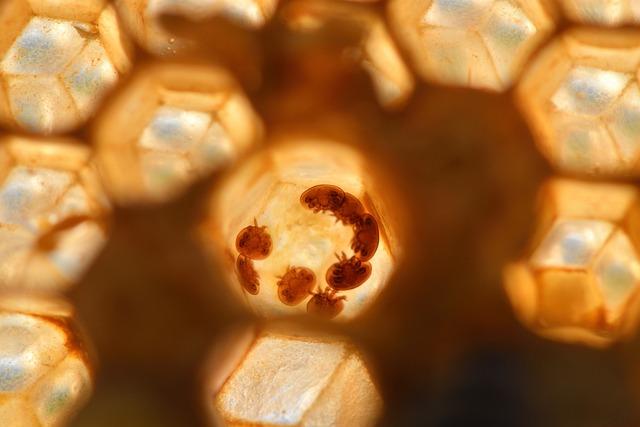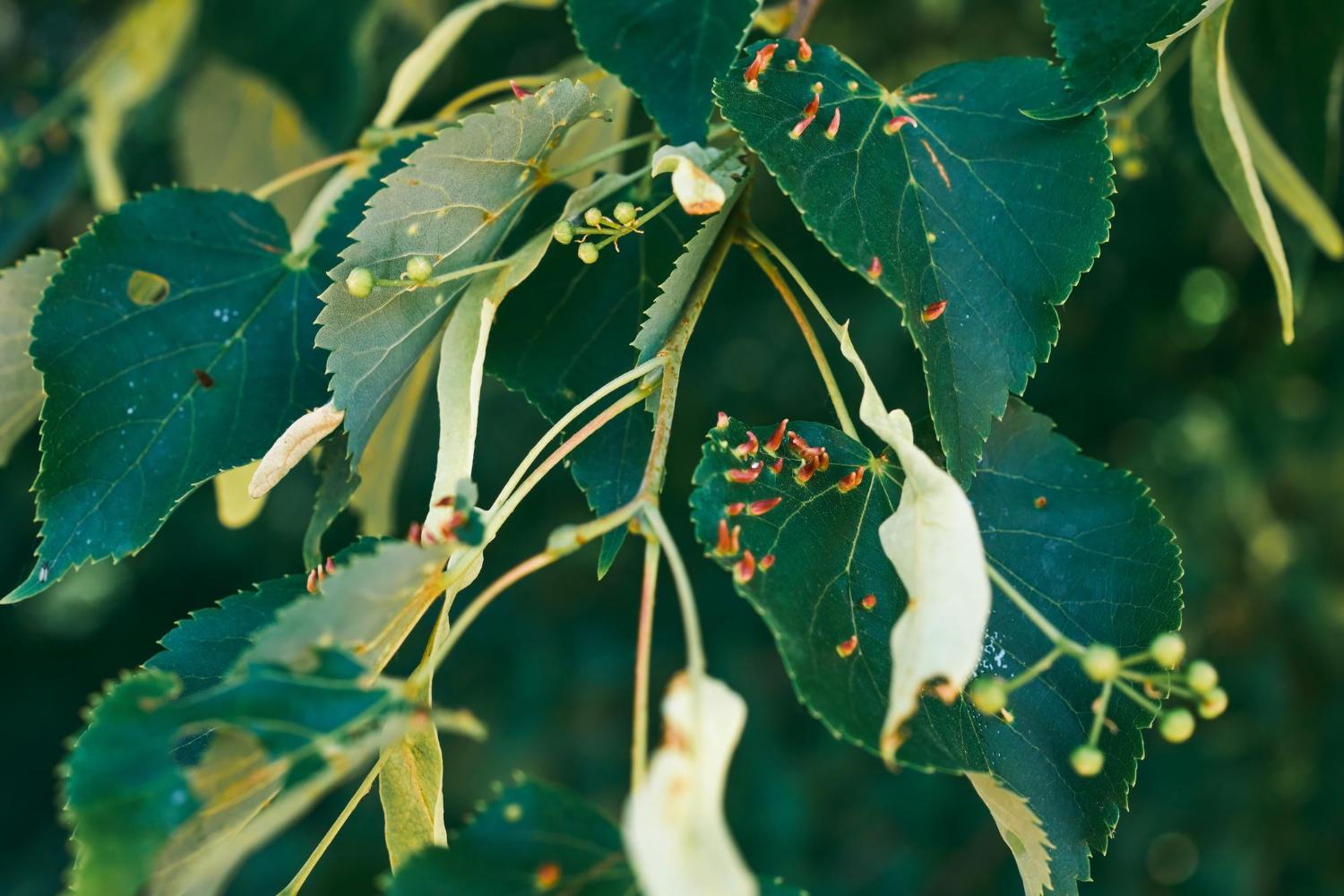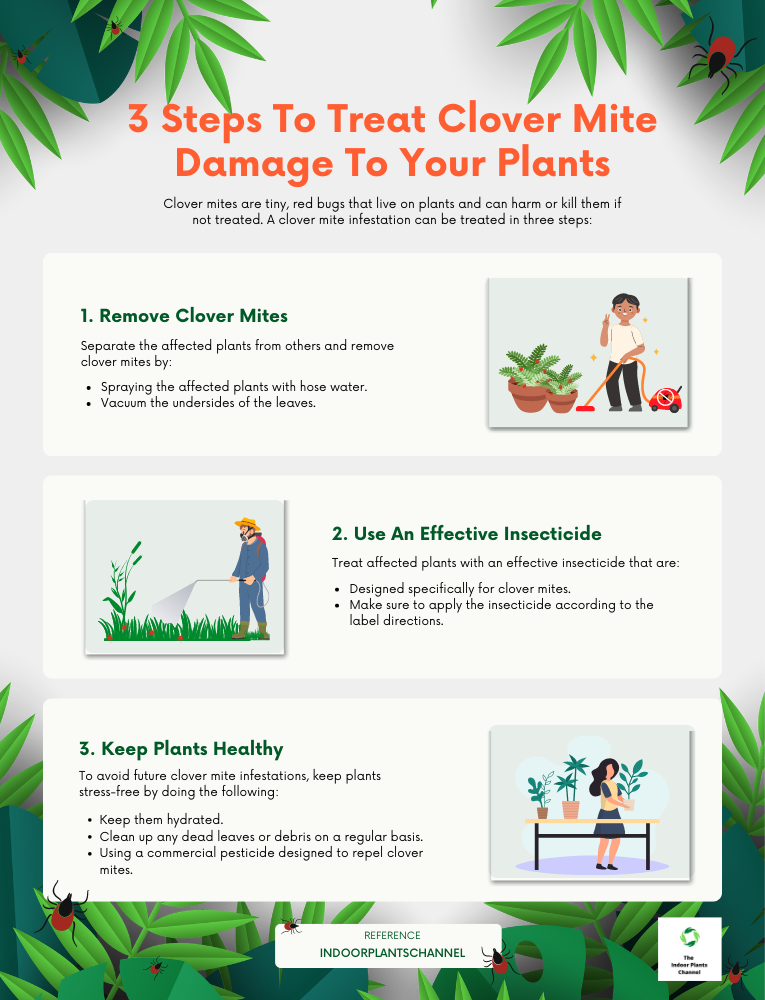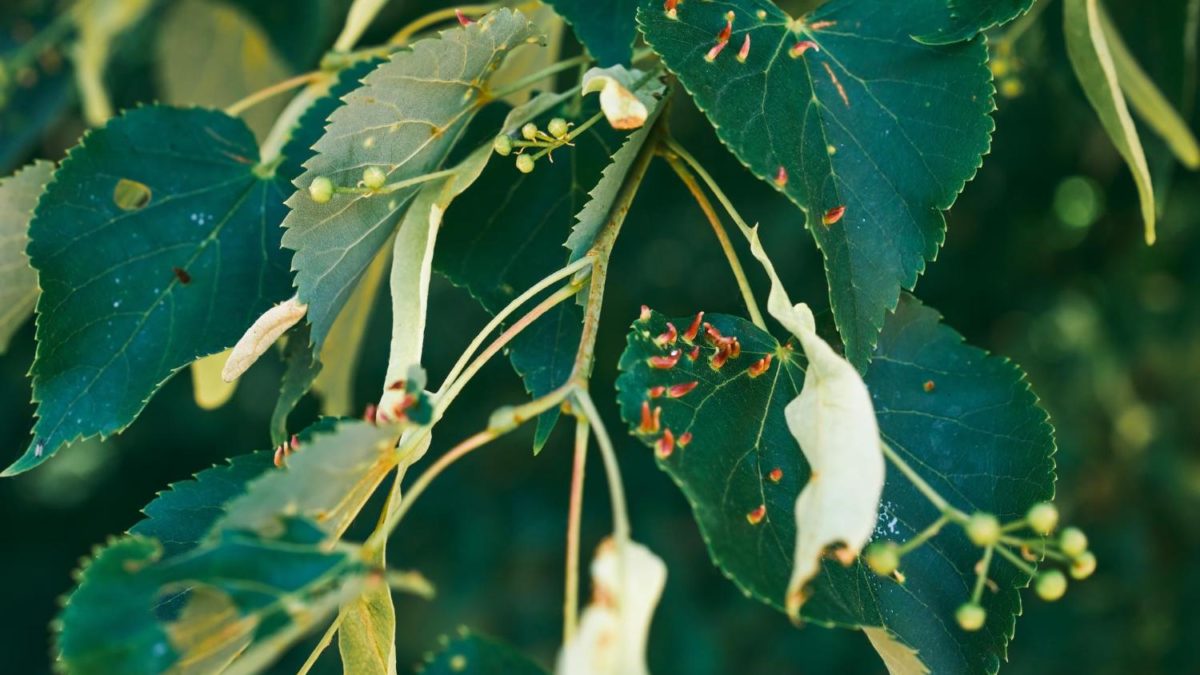Clover mites are tiny pests that are often found in homes. They are reddish brown in color and have long, slender bodies.
Clover mites feed on plant materials and are especially fond of clover. That’s why they’re often found in gardens and lawns. They can also be found on other plants, such as trees, shrubs, and flowers. When clover mites invade homes, they often do so in search of food.
Clover mites are attracted to light, so they often enter homes through open doors and windows. Once inside, they can be found in any room, including kitchens, bathrooms, and bedrooms. They can also be difficult to get rid of once they’re inside your home.

If you have a clover mite infestation, you can try out some of the treatments below or contact a pest control professional if it’s very serious. But first, you need to know how the mites enter homes, how they damage plants, etc, to understand how the mites work and prevent them from subsequent infestations.
How Do Clover Mites Get Into Your Home?
Clover mites get into your home by crawling through cracks and crevices in the foundation or walls. They can also come in through doors and windows that are not properly sealed. Once they are inside, they will feed on plants, fabric, and other organic materials.
How Do Clover Mites Damage Plants?
Clover mites damage plants by sucking out their sap. This weakens the plant and can eventually kill it. They often attack young, tender plants that are not yet fully established. Clover mites can also spread plant diseases as they feed.
What Kind Of Plants Are Most Susceptible To Clover Mite Damage?
Clover mites are most commonly found on plants that are low to the ground, such as clover, alfalfa, and other short grasses. They can also be found on trees and shrubs, but they are more likely to cause problems on plants that are closer to the ground.
How Can You Tell If Your Plant Has Been Damaged By Clover Mites?
If you see tiny, red bugs on your plants, they may be clover mites. These pests can damage your plants by sucking out their sap.

Credit: Freepik
To tell if your plant has been damaged by clover mites, look for the following signs:
- Wilting leaves: If the leaves of your plant are wilting or turning yellow, it may be a sign of clover mite damage.
- Stunted growth: If your plant is not growing as quickly as it should be, it may be because clover mites are sucking out its nutrients.
- Discolored leaves: If the leaves of your plant are discolored or have brown spots, it may be a sign of clover mite damage.
What Can You Do To Prevent Clover Mites From Damaging Your Plants?
There are a few things you can do to prevent clover mites from damaging your plants.
- Keep your plants well-watered. Clover mites are attracted to dry plants, so keeping your plants hydrated will help keep them away.
- Regularly clean up any dead leaves or other debris around your plants. This will remove any potential homes for clover mites, and make your plants less attractive to them.
- Try to use a commercial pesticide designed to kill or repel clover mites. Be sure to follow the instructions on the pesticide label carefully, and only use it as a last resort.
How Can You Treat Plants That Have Been Damaged By Clover Mites?
Clover mites are tiny, red spider-like creatures that are attracted to plants. They can cause damage to plants by sucking out the sap, which can lead to yellowing and wilting of the leaves.
If you have plants that have been damaged by clover mites, there are some things you can do to treat them.
- First, you will need to remove the mites from the plants. You can do this by spraying the plants with water from a hose or by using a vacuum cleaner. Be sure to vacuum the underside of the leaves, as this is where the mites are most likely to be hiding.
- Next, you will need to treat the plants with an insecticide. There are many different kinds of insecticides available, so be sure to read the label carefully to find one that is effective against clover mites. Apply the insecticide according to the directions on the label.
- Finally, you can help prevent damage from clover mites in the future by keeping your plants healthy and free from stress.

Bonus Tips
- Inspect the plant for signs of damage and treat it accordingly.
- Prune the plant to remove any dead or dying leaves or stems.
- Fertilize the plant with high-quality plant food.
- Water the plant regularly and keep the soil moist but not soggy.
- Place the plant in a bright location out of direct sunlight.
- Dust the plant leaves regularly to prevent the build-up of dust and grime.
Frequently Asked Questions
- What do clover mites eat and why are they attracted to plants?
Clover mites are very small mites that feed on plant juices. They are often found near windows and doors, and on porches and patios where they can get access to plants. They are most active in the spring and fall and can be a nuisance when they invade homes and businesses.
Clover mites do not bite or sting and are not known to carry diseases. However, their presence can be a nuisance, and they can cause damage to plants.
- What do clover mites eat?
Clover mites feed on plant juices, and they are attracted to plants that are high in nitrogen. They often feed on clover, but they can also be found on other plants, such as ivy, roses, and lilies.
- Why are clover mites attracted to plants?
Clover mites are attracted to plants because they provide a food source. Clover mites are particularly attracted to nitrogen-rich plants, such as clover, ivy, and roses.
- How can I get rid of clover mites?
There are a number of ways to get rid of clover mites. You can remove them from your home with a vacuum cleaner, or you can treat your plants with pesticides. You can also take steps to prevent them from entering your home in the first place, such as sealing cracks and gaps around doors and windows.
Conclusion
Clover mites are attracted to plants because they feed on the sap of plants. They are especially fond of red clover, which is why they are often found in gardens and fields where this plant is growing.
These pests damage the sap of your plants, making them look unhealthy. So, it’s crucial to understand how to prevent these mites, how to take care of plants damaged by them, and how to eradicate clover mites completely.
Michelle Wilde
Related posts
![]()
About Michelle Wilde
Michelle Wilde is a stay-at-home mom and avid plant lover. Armed with a post-graduate degree in Computer Science (no kidding!), she loves researching plants and landscapes. When she is not caring for her 4 kids, she spends time on her passion for plants. She blogs at www.indoorplantschannel.com, the trusted source for indoor plants.
Learn more
Subscribe
* You will receive the latest posts and updates about indoor plants!
Search
Recent Posts
Categories
- Beginner Guides (10)
- FAQ (206)
- General (2)
- How-To Guides (212)
- Indoor Plants (214)
- Pest Management (2)
- Plant Problem Solutions (4)
- Seasonal Growing (2)
- Specialized Environments (2)
- Specific Plant Care (3)
- Technical Growing (2)
